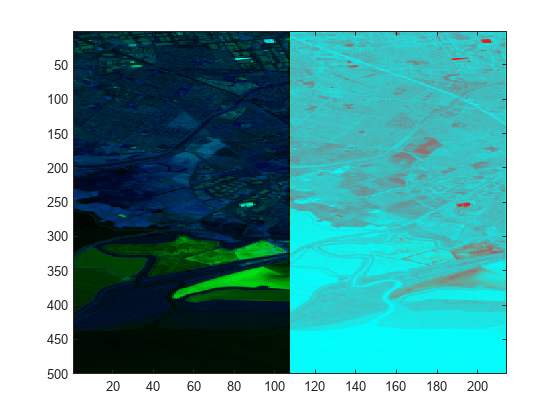iarr
Apply internal average relative reflectance (IARR) correction to spectral data
Description
correctedData = iarr(inputData)inputData. The IARR method computes the mean spectrum from the entire
dataset, then divides the spectrum of each pixel by the mean spectrum.
Note
This function requires the Hyperspectral Imaging Library for Image Processing Toolbox™. You can install the Hyperspectral Imaging Library for Image Processing Toolbox from Add-On Explorer. For more information about installing add-ons, see Get and Manage Add-Ons.
The Hyperspectral Imaging Library for Image Processing Toolbox requires desktop MATLAB®, as MATLAB Online™ and MATLAB Mobile™ do not support the library.
Examples
Input Arguments
Output Arguments
References
[1] Kruse, Fred A. “Use of Airborne Imaging Spectrometer Data to Map Minerals Associated with Hydrothermally Altered Rocks in the Northern Grapevine Mountains, Nevada, and California.” Remote Sensing of Environment 24, no. 1 (February 1988): 31–51. https://doi.org/10.1016/0034-4257(88)90004-1.
Version History
Introduced in R2020bSee Also
hypercube | multicube | logResiduals | flatField | subtractDarkPixel | empiricalLine | reduceSmile | sharc
